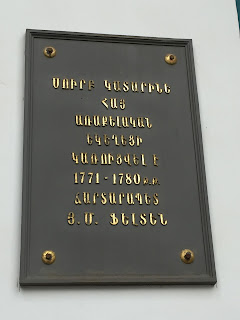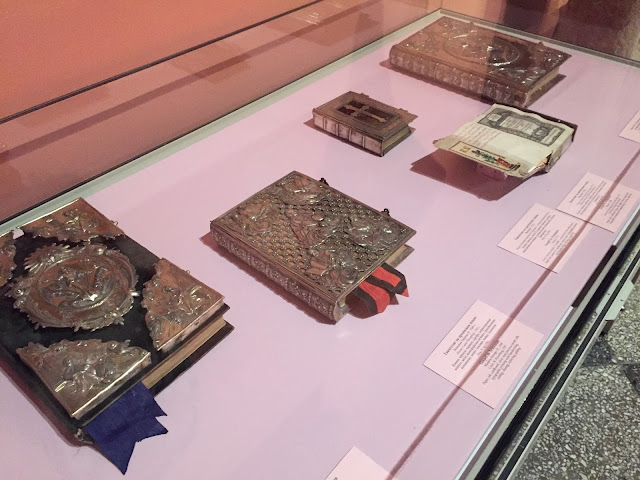152. Artifacts from the Armenian Apostolic Church of St. Catherine
Immigrants from Armenia settled in St. Petersburg just a few years after its founding. They worked as traders in the new city, and Peter the Great considered them a very helpful liaison between western Europe, St. Petersburg, and the Caucasus region far to the south. In 1770, Empress Catherine the Great granted the land on which the Armenian Apostolic Church of St. Catherine now stands to the Armenian community. The Church was built between 1771 and 1775, and was consecrated in 1780. It is tucked inside a courtyard on Nevsky Prospekt, across the street from the historic Gostiny Dvor shopping arcade. Although not as impressive or prominent as Kazan Cathedral just a block away, the Armenian Apostolic Church of St. Catherine is nevertheless a beautiful and equally historic building worth a visit.
The church was shut down by the Soviet authorities in 1930, and at that time all of its priceless art and artifacts were removed (the building was returned in the late 1980s and re-consecrated in 1992). The Hermitage Winter Palace has recently opened a special exhibit that displays 40 of these objects, to mark the 300th anniversary of the Russian and Novo-Nakhichevan Diocese of the Armenian Apostolic Church. The exhibit is small, with just three or four display cases squeezed into the room that houses other Armenian objects on permanent display. This room is in a little-visited corner on the first floor of the Hermitage. It was challenging to find my way there even though I've been to this part of the Winter Palace before. The exhibit includes an icon and service books, priestly vestments and other textile items, church decorations, and utensils and plates used during communion service. The highlights are definitely the several centuries-old religious books written in the Armenian language and the silver objects made by craftsmen in St. Petersburg.
The church was shut down by the Soviet authorities in 1930, and at that time all of its priceless art and artifacts were removed (the building was returned in the late 1980s and re-consecrated in 1992). The Hermitage Winter Palace has recently opened a special exhibit that displays 40 of these objects, to mark the 300th anniversary of the Russian and Novo-Nakhichevan Diocese of the Armenian Apostolic Church. The exhibit is small, with just three or four display cases squeezed into the room that houses other Armenian objects on permanent display. This room is in a little-visited corner on the first floor of the Hermitage. It was challenging to find my way there even though I've been to this part of the Winter Palace before. The exhibit includes an icon and service books, priestly vestments and other textile items, church decorations, and utensils and plates used during communion service. The highlights are definitely the several centuries-old religious books written in the Armenian language and the silver objects made by craftsmen in St. Petersburg.






























Comments
Post a Comment